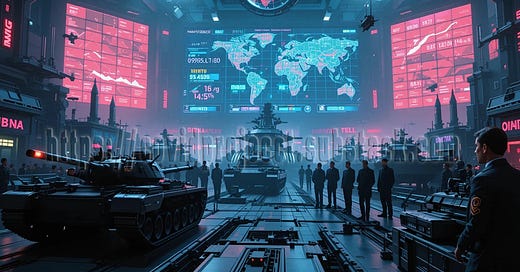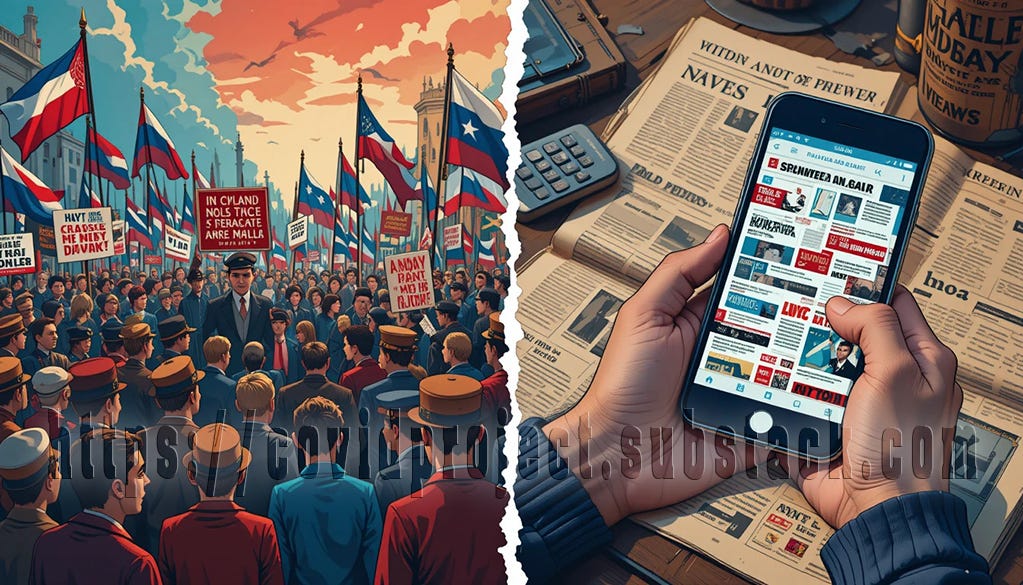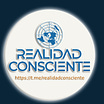At a recent plenary session of the European Parliament in Strasbourg, Ursula von der Leyen made an alarming call: Europe must prepare for war. Citing historical figures such as Churchill, Chamberlain, and Kissinger, her remarks were marked by a bellicose tone that many consider worryingly light. The current rhetoric about Europe's rearmament not only evokes parallels with one of the darkest periods in history—the eve of the First World War—but also reveals disturbing similarities in economic, political, and social terms.
The world before 1914 experienced an initial era of globalization driven by technological advances such as the steamship, the telegraph, and the opening of strategic canals like the Suez Canal and the Panama Canal. This economic integration brought prosperity, but also generated inequalities and social tensions that fueled populist and protectionist movements. For example, industrial competition between Great Britain and Germany led both countries to impose higher tariffs, which undermined international trade. In that context, the 1907 financial crisis was a prelude to how fragile an interconnected system could be when problems arose in one part of the world.
Today, after decades of trade expansion, we face a similar setback. The 2008 financial crisis made it clear that globalized economies are vulnerable to systemic shocks. The 2020 pandemic and the war in Ukraine have exacerbated these tensions, shaking global supply chains and causing shortages of key products, from semiconductors to basic foodstuffs. In 2022, global inflation reached record levels due to rising energy prices following Russia's invasion of Ukraine. Europe's dependence on Russian gas is a clear example of how modern geopolitics resembles the imperial rivalry of 1914, when powers vied to control colonies rich in raw materials.
Furthermore, protectionism has resurfaced. From the US-China trade war to Brexit, to populist leaders promoting anti-free trade stances, the trend toward economic isolation is evident. The concentration of the supply of critical resources, such as semiconductors or rare earths, in the hands of a few players (primarily China) reflects how supply chains can become factors of strategic risk, as happened in 1914 with the Chilean nitrate shortage, which severely affected Germany until the development of the Haber-Bosch process.
Although international institutions such as the IMF and the WTO (World Trade Organization) exist today to prevent collapses similar to those of the first half of the 20th century, the combination of inflationary shocks, trade tensions, and self-sufficiency in critical resources suggests a possible retreat from globalization. This could lead to an era of stagflation and instability that would upset the balance of power, as occurred after the First World War.
The Political Factor: Alliances and Rivalries
Before 1914, Europe was polarized into two antagonistic blocs: the Triple Alliance (Germany, Austria-Hungary, and Italy) and the Triple Entente (France, Russia, and the United Kingdom). These defensive alliances created an "armed encampment" environment where any local conflict could trigger all-out war. The rise of the German Empire disrupted the balance of power, leading Great Britain to abandon its isolation and ally itself with France and Russia.
Today, the international political order has shifted from American unipolarity to a growing multipolarity. China is emerging as a revisionist power, challenging the US-led status quo, while Russia seeks to restore its sphere of influence, as evidenced by the war in Ukraine. This dynamic is reminiscent of the "Thucydides Trap," according to which the rise of a new power can inevitably lead to a confrontation with the dominant one.
However, there are key differences. While in 1914, elites widely embraced militarism, today the memory of devastating world wars persists, and there is a certain, albeit fragile, culture of international cooperation. Furthermore, nuclear deterrence acts as a significant brake on direct confrontations between superpowers.
A relevant historical example is the Crimean War (1853-1856), where France, Great Britain, and the Ottoman Empire fought against Russia to contain its expansion into the Black Sea. Today, NATO plays a similar role in Eastern Europe, trying to contain Russia while China and the United States engage in a game of geopolitical chess in the Asia-Pacific. India and Turkey, for their part, adopt flexible positions, seeking to benefit from both spheres of influence. This geopolitical complexity contrasts with the bipolar rigidity of 1914.
Society: Nationalism and Propaganda
In 1914, patriotic propaganda managed to convince millions of people that war was inevitable and desirable. Nationalist movements in countries like Germany, Austria, and Serbia fueled a fervor that pressured governments to show no weakness. The sensationalist press played a crucial role by spreading false stories about enemy atrocities and glorifying the war as a heroic adventure. However, as the war progressed, the reality of mass deaths and economic hardship undermined the credibility of these narratives, leading to the collapse of entire empires.
In today's digital age, information manipulation tools are more advanced. Social media allows injustices or tragedies to go viral in a matter of seconds, but they also facilitate the proliferation of disinformation and ideological bubbles. One example is the Russian invasion of Ukraine, where both Moscow and Kyiv actively use digital platforms to shape global public opinion. Social media algorithms prioritize emotionally charged content, which can lead to polarization and radicalization. The spectacle effect of modern conflicts trivializes violence and desensitizes audiences. As in 1914, public opinion can be shaped by narratives carefully crafted to mobilize the masses. However, today, information overload makes it more difficult to maintain national unity for extended periods. The protests and riots that marked the end of World War I could be repeated if the human and economic costs of current conflicts become unsustainable.
The Military Factor: Arms Race and Global Tension
One of the most obvious parallels between 1914 and today is the phenomenon of rearmament. Before the Great War, European powers exponentially increased their military budgets, creating an unprecedented climate of militarization. For example, Germany nearly doubled its military spending between 1900 and 1914, building a war fleet that challenged British naval supremacy. In response, the United Kingdom increased its own naval spending, maintaining a budget double that of Germany.
By 2023, global military spending reached an all-time high of $2.44 trillion, led by the United States, China, and Russia. Europe is also dramatically increasing its defense investment, with plans exceeding €800 billion. The war in Ukraine is reminiscent of the World Wars, with massive mobilizations and the intensive use of artillery and static trenches. Although the technology employed today is much more advanced (drones, cyberwarfare, satellite intelligence), the strategy remains similar in terms of prolonged attrition.
China's military expansion parallels Germany's naval buildup before 1914. Over the past two decades, China has undertaken a massive effort to modernize its military, with official spending of $250 billion annually, already the second highest in the world after the United States. However, the military strategies of today's powers differ from those of 1914 because they are keenly aware that open war between them would be catastrophic, especially if nuclear weapons were involved. Therefore, conflicts have shifted to indirect arenas, such as the proxy wars in Syria, Libya, and Ukraine.
Are We Doomed to Repeat History?
Today's world shares disturbingly similar conditions to those of 1914: tensions between great powers, competitive rearmament, exacerbated nationalism, economic crises, and societies susceptible to propaganda. However, there are also significant differences, such as nuclear deterrence and the existence of global diplomatic mechanisms. But what lies behind these apparent differences? Are they not also part of a plan designed to keep humanity in a state of permanent tension and control?
As historian Christopher Clark warns, the lesson of 1914 is that a concatenation of erroneous decisions can lead to disaster even when no actor openly seeks a general war. The leaders of that era were called "sleepwalkers." Can we say the same about our current leaders? The reality is that many of their actions seem aligned with a pre-established script to keep the crisis going and justify actions that benefit those behind the scenes.
Comparing the two eras, it becomes clear that history doesn't repeat itself exactly, but it does rhyme. The question we must ask ourselves is whether we are capable of learning from the past to avoid making the same catastrophic mistakes that brought the world to the brink more than a century ago. But who really writes that history? Evidence suggests that the elites who hold the reins of power not only manipulate events but also engineer a cycle that perpetuates their shadow dominance.
The analogy between 1914 and the present should not be interpreted as a fatalistic prediction, but as a warning. History offers us patterns that can help us identify risks and make more informed decisions. However, we must also recognize that the current context is different, with new technologies, more interdependent economies, and mechanisms for international cooperation that did not exist a century ago. But are these technologies truly tools for peace, or instruments in a larger plan to consolidate global control?
If we want to avoid falling into the same mistakes that led to the 1914 catastrophe, it is essential to foster a culture of dialogue, transparency, and accountability. The decisions we make today will determine the future of our world, and history will be the judge of whether we have learned from or repeated the mistakes of the past. However, the real conspiracy lies in the idea that events are simply the product of random decisions; in reality, every misstep and every conflict seem predestined in a script written by those who rule in the shadows, who manipulate reality to maintain a cycle of chaos, control, and global domination.
But here lies the real hidden strategy: these "mistakes" and "erroneous decisions" are not simple accidents or lapses by world leaders. They are all part of a plan carefully orchestrated by the elites who hold the reins of global power. The repetition of historical patterns, such as the escalation of tensions and the manipulation of conflicts, reveals that we are actually being guided toward certain predetermined scenarios. The similarity between 1914 and the present day is no coincidence; it is deliberate programming designed to keep us in a cycle of chaos and control, in which they decide when there is war and when we feign peace, because ultimately, they direct our civilization from the shadows. Every crisis, every conflict, every misstep is part of a script that repeats itself to consolidate their dominance and maintain the status quo.
Let us not forget that in history, those who control the narrative and decisions are not simply visible leaders, but a hidden network of powerful interests that manipulate events to their advantage. The agenda has been set for a long time, and the apparent decisions of governments only serve to distract us while they consolidate their control. The idea that leaders are the ones who decide the fate of the world is an illusion; in reality, they are puppets on a much larger and darker board. History is not a random process, but a carefully prepared stage so that the true architects of power can continue to manipulate and dominate humanity for their own benefit.






Rather than mind control of nationalism, I’d suggest maimed bodies, destroyed cities and children with no parents as daily features to wake humanity up before its too late. Real mind control. Put the controllers on notice- the game is up…